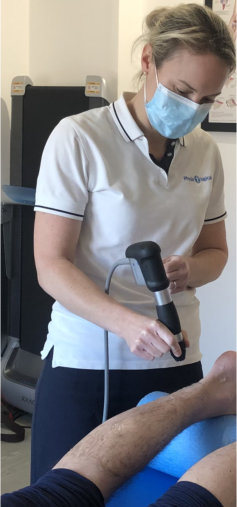 My name is Natalie March from Physio-logical, a chartered physiotherapist in Stansted Park and Rowlands Castle.
My name is Natalie March from Physio-logical, a chartered physiotherapist in Stansted Park and Rowlands Castle.
Plantarfasciitis is the most common cause of heel pain, occurring in around 10% of the general population. At Physio-logical we have a new service ‘Shockwave’. Medical evidence shows a 90% improvement when plantarfaciitis is treated with shockwave combined with exercises, (NICE guidelines)
Today we will share some information about ‘Shockwave Therapy’ and some self help exercises for plantarfaciitis too.
What is plantarfaciitis?
It is a pain in the heel and underside of the foot. The plantarfascia itself is a tough band of fibrous tissue that extends from the heel bone to the toes. It supports the arch of your foot and takes a lot of load during walking and running. Plantar fasciitis is an overuse injury to the fascial sheet on the sole of the foot.
Causes of Plantarfaciitis:
- When there is an increased load placed on the plantarfascia by running, walking, playing tennis or by a patient’s biomechanics.
- Tight calf muscles
- Poor footwear
- Poor glutes control
- Calf muscle weakness
What are the symptoms of Plantarfaciitis?
People with plantarfaciitis may have a number of symptoms including:
- Pain on the bottom of your foot, sometimes going into your heel.
- Usually the first few steps in the morning are painful but this gradually settles as you continue walking.
- Walking barefoot, on your toes, going up stairs and running all tend to aggravate the pain.
Treatment
There are lots of different treatment options from shockwave, taping, to sports massage to release of tight calf muscles and plantarfascia, ankle joint mobilisation, strengthening exercises, stretches, and acupuncture.
Shockwave - What is it?
Shockwave is a pro-inflammatory and inflammatory optimiser which can help to kick start a stalled healing process. The device creates an acoustic wave which is transmitted into your tissue.
This causes increased blood flow to the area as well as stimulating tissue at a cellular level leading to improved tissue regeneration. Another benefit of shockwave is that it can provide a pain-relieving effect in some patients which can last as long as 4 weeks but is particularly effective during the first 48 hours post treatment.
If you have been struggling with plantarfaciitis for a while and it is not getting better then shockwave combined with exercises is the best treatment option.
Exercises for Plantarfaciitis
These were covered in our Edition 53 available from our view or download archive on line at: www.postcodepublications.com
Please be aware of your body and take advice from your GP before exercising or send an email to (enquiries@physio-logical.net) for advice and guidance.
If you want to live a better life without that ongoing plantarfascia niggle then we can help you at our Stansted Park Physiotherapy Clinic, Rowlands Castle.